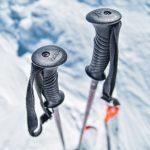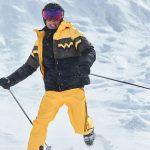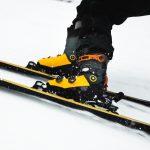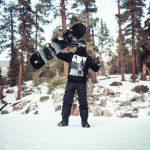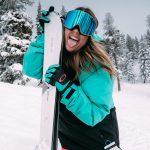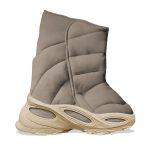Snowboard Size Chart – Guide To Choosing A Snowboard
Do you want to go snowboarding or kickstart your snowboarding Career? Well, we understand that finding the perfect snowboard size to buy for your snowboarding expedition can be overwhelming for beginners. Nevertheless, our team of experts has compiled this snowboard Size Chart guide to help you determine your snowboard size with ease.
Misinformation on snowboard sizing, shapes, and style can lead to discomfort and accidents. You definitely don’t want that, right?
Let’s get started! Stay put!! Looking for Ski Sizing, or Ski Glove Sizes? Check it here.
What size snowboard do I need?
Picking the perfect snowboard size can be overwhelming, for starters. Below are a number of frequently asked questions in this regard.
- Ready to pick the right snowboard for your body size and riding style?
- Is there a difference between beginner and advanced boards?
- What Size Snowboard Should I Buy?
- What should I know about buying a snowboard for the first time?
- How to Choose the Correct Length Snowboard For A Child:
- What Type of Snowboard Should I Get?
- How Wide Should My Snowboard Be?
- How to Choose a Snowboard
Well, imagine determining your snowboard size is pretty easy!!
So, how do I determine the perfect snowboard sizing?
Snowboards vary in sizes and board shapes depending on a number of factors, including:
- Bodyweight
- Types of riding
- Riding styles and skills
- Sidecut, flex, camber profile, etc.
What are the various types of snowboards?
The various styles and types of snowboarding depend on the snowboarding gear being used, the place the ride occurs, and the equipment being used.
1. Freestyle snowboard
Focusses on rail slides, tricks, jumps, switch riding, and half pipes. Freestyle snowboarding is usually carried out by professional riders. The riders use softer boots as a means to reduce weight to ease maneuvering in the air. Freestyle snowboards are lighter, have softer boards, and are shorter with identical tips and tails.
2. Downhill snowboards
In this, one learns to ride, jumping and how to carve in all-terrain. It is not technical, and hence beginners can start here. Equipment used includes flow-in bindings, soft snowboard boots, and plate bindings. The snowboards are longer boards with narrower widths and deeper side cuts.
3. All-mountain snowboard.
We have all-mountain board types which are great beginner boards that are suitable for beginners advancing to intermediate levels with combination board, cambered board,
4. Splitboarding
It is a normal and average snowboard that has interchangeable use between snowboarding and skiing.
5. FreeCarve
Riders use plate binding hard snowboard boots and involve no jumping.
6. Directional boards
Directional boards have been made for riding in a single direction. They have distinct tails and noses with a deeper sidecut radius towards the tail.
Is there a difference between beginner and advanced boards?
Well, let’s find out!
Which rider level am I?
- Beginners
- Intermediate level rider
- advanced riders
- expert rider
Also, there are a number of riding types and riding styles. As earlier said, freestyle riding is a type of riding for a professional rider, lighter rider, heavy rider with decades of riding. They usually have preferred riding styles whereby they practice ride switch as common riding styles. In this, the rider stance is the opposite of the normal stance. This freestyle riding purpose of enabling the rider to move at faster speeds downhill as well as maintain stability at speed.
Ready to pick the right snowboard for your body size and riding style?
Let’s get started!!
Experts have recommended a number of steps to achieve this.
- Use your height, weight, boot size, and riding style and check them against the size chart suggested by manufacturers.
- Consider Your Ability Level and Riding Style
- Use your waist width and boot size
Step #1: Use Your Height, Weight, Boot Size, and Riding Switch Style
Boards for beginners should be shorter as they tend to be easier to control s compared to longer snowboards. Also, shorter boards help for easier spin tricks rotating in the air, etc. In addition to that, freeride snowboards have longer boards which the riders achieve stability at speed. For all snowboards, you do not have to conform to the earlier belief that the board has to be as tall as you or one that reaches below your chest. It has to reach your chin or chest.
On the other hand, weight also plays an integral part in the choice of snowboards. For instance, heavier riders require stiffer boards to prevent them from carving into their weight.
Snowboard Size Chart.
| Rider’s height in inches and cm | Riders weight in pounds and kgs | Snowboard size in cm and inches |
| 4’10” 147.32 cm | 110 – 120 pounds 49.8952 – 54.4311 kgs | 128–136 cm 50.3937 – 53.5433 inches |
| 5’ 152.4 cm | 115 – 130 pounds 52.1631 – 58.967 kgs | 133–141 cm 52.3622 – 55.5118 inches |
| 5’2” 157.48 cm | 135 – 145 pounds 61.235 – 65.7709 kgs | 139–147 cm 54.7244 – 57.874 inches |
| 5’4” 162.56 cm | 135 – 145 pounds 61.235 – 65.7709 kgs | 144–152 cm 56.6929 – 59.8425 inches |
| 5’6” 167.64 cm | 140 – 155 pounds 63.5029 – 70.3068 kgs | 149–157 cm 58.6614 – 61.811 inches |
| 5’8” 172.72 cm | 150 – 165 pounds 68.0389 – 74.8427 kgs | 154–162 cm 60.6299 – 63.7795 inches |
| 5’10” 177.8 cm | 160 – 175 pounds 72.5748 – 79.3787 kgs | 159–167 cm 62.5984 – 65.748 inches |
| 6’ 182.88 cm | 170 – 185 pounds 77.1107 – 83.9146 kgs | 160 > cm 62.9921 > inches |
| 6’2” 187.96 cm | 180 – 195 pounds 81.6466 – 88.4505 kgs | 160 > cm 62.9921 > inches |
| 6’4” 193.04 cm | 190 – 205 pounds 86.1826 – 92.9864 kgs | 160 > cm 62.9921 > inches |
Larger foot sizes call for wider boards so as to enhance proportionality. For a small foot size, a narrower board is ideal. Wider boards provide a greater surface area and better float, thus helping reduce toe/heel drag, thus enhancing speeds with stability. Narrow boards facilitate turning and the ability to maneuver.
In addition to the Snowboard Size Chart, some people prefer splitting the chart into two, which are;
- Snowboard length size chart
- Snowboard width size chart
Let’s take a look at the two.
Snowboard length size chart
Having your preferred riding style in mind when checking the various board lengths is vital. For instance, freeride riders prefer longer snowboards for extra edge hold, stability, and float in terrains that are steeper and the varying snow conditions such as deep snow and firm snow.
On the other hand, freestyle riders prefer shorter-length snowboards to ensure weight reductions and make it easy to carry out tricks as they do not require extra edge hold and stability as they are used at moderate speeds.
Check the snowboard length size chart below for all-mountain and freestyle snowboards lengths for beginners. Use it to determine the length range that is perfect for you.
| Rider’s weight | Freestyle lengths in cm and inches | All-mountain lengths in cm and inches |
| < 80 lbs. (36 kg) | 137 cm 53.937 inches | 132 cm 51.9685 inches |
| 80-120 lbs. (45-59 kg) | 140 cm 55.1181 inches | 135 cm 53.1496 inches |
| 100-130 lbs. (45-59kg) | 143 cm 56.2992 inches | 138 cm 54.3307 inches |
| 110-140 lbs. (50-64 kg) | 147 cm 57.874 inches | 142 cm 55.9055 inches |
| 125-155 lbs. (57-70 kg) | 150 cm 59.0551 inches | 145 cm 57.0866 inches |
| 135-165 lbs. (61-75 kg) | 153 cm 60.2362 inches | 148 cm 58.2677 inches |
| 145-170 lbs. (66-77 kg) | 156 cm 61.4173 inches | 151 cm 59.4488 inches |
| 160-190 lbs. (73-86 kg) | 160 cm 62.9921inches | 155 cm 61.0236 inches |
| 175-205 lbs. (79-93 kg) | 163 cm 64.1732 inches | 158 cm 62.2047 inches |
| 185-215 > lbs. (84-98 kg) | 165 cm 64.9606 inches | 160 cm 62.9921 inches |
How Wide Should My Snowboard Be?
Snowboard waist width is a critical performance dimension. If it’s too wide, the board will feel slow when moving from an effective edge to edge. If it is too narrow, the rider will drag the toe cap heel or heel cup of the binding in the snow in case of sharp turns. Therefore, riders with big feet do require the perfect snowboard waist width.
Take a look at the Snowboard Width & Boot Size Chart table below to choose which snowboard waist width works best for your riding style by boot size.
| Men’s boot size in cm and inches | The recommended perfect snowboard waist width in cm and inches |
| 24-25 cm 9.44882 – 9.84252 inches | US men’s 5-7 cm 1.9685 – 2.75591 inches |
| 24.8-26 cm 9.76378 – 10.2362 inches | US men’s 7.5-9.5 cm 2.95276 – 3.74016 inches |
| 25.2-26.3 cm 9.92126 – 10.35433 inches | US men’s 10-11 cm 3.93701 – 4.33071 inches |
| 26.3-27.5 cm 10.35433 – 10.82677 inches | US men’s 11.5-14 cm 4.527559 – 5.51181 inches |
Below is the women’s size chart
| Women’s boot size in cm and inches | The recommended perfect snowboard waist width in cm and inches |
| 23.7-24.5 cm 88.070866 – 9.645669 inches | US women’s 5-7 cm 1.9685 – 2.75591 inches |
| 23.9-24.9 cm 9.409449 – 9.80315 inches | US women’s 7.5-9.5 cm 2.95276 – 3.74016 inches |
| 24.1-25.3 cm 9.488189 – 9.96063 inches | US women’s 9.5-11 cm 3.74016 – 4.33071 inches |
The Jones boards come in different shapes and sizes. For instance, they have the directional boards, which are the longest. To choose your perfect size for the directional freeride board, you have to use your boot size and body weight. Furthermore, there are the directional twin boards, alternative freeride boards, and the surf series models, as shown in the following sizing guide.
| Snowboard type | Snowboard sizing |
| Storm Chaser | 6-13 cm and 2.3622 – 5.11811 inches shorter |
| 6-13 cm and 2.3622 – 5.11811 inches shorter | 4-8 cm and 1.5748 – 3.14961 inches shorter |
| Directional twin | 2-3 cm and 0.787402 – 1.1811 inches shorter |
| Directional Freeride | traditional length |
| Mind Expander | 4-8 cm and 1.5748 – 3.14961 inches shorter |
Got big feet? Worry not
The Big Horn Series has boards designed for the extremities. They have waist widths of 26.3cm or wider widths to enhance performance on steep and hard snow.
If you wear US men’s 11.5 or bigger, look for our Big Horn Series boards with minimum waist width of 26.3 cm.
Below is a sample Big Horn Series snowboard size chart for directional freeride snowboards. Consider checking out more on their websites.
| Directional Freeride | ||
| Model | Snowboard Length (cm and inches) | Snowboard waist width (cm) |
| Ultra Solution | 162 cm 63.7795 inches | 26.3 cm 10.35433 inches |
| 165 cm 64.9606 inches | 26.6 cm 10.47244 inches | |
| Ultra Flagship | 162 cm 63.7795 inches | 26.3 cm 10.35433 inches |
| 165 cm 64.9606 inches | 26.6 cm 10.47244 inches | |
| Solution | 159 cm 62.5984 inches | 26.3 cm 10.35433 inches |
| 162 cm 63.7795 inches | 26.3 cm 10.35433 inches | |
| 165 cm 64.9606 inches | 26.6 cm 10.35433 inches | |
| 169 cm 66.5354 inches | 27.0 cm 10.6299 inches | |
| Flagship | 159 cm 62.5984 inches | 26.3 cm 10.35433 inches |
| 162 cm 63.7795 inches | 26.3 cm 10.35433 inches | |
| 165 cm 64.9606 inches | 26.6 cm 10.35433 inches | |
| 169 cm 66.5354 inches | 27.0 cm 10.6299 inches | |
| 172 cm 67.7165 inches | 26.3 cm 10.35433 inches | |
| Frontier Split | 161 cm 63.3858 inches | 26.4 cm 10.3937 inches |
| 164 cm 64.5669 inches | 26.6 cm 10.35433 inches | |
| Frontier | 161 cm 63.3858 inches | 26.4 cm 10.3937 inches |
| 164 cm 64.5669 inches | 26.6 cm 10.35433 inches | |
| 167 cm 65.748 inches | 26.8 cm 10.55118 inches | |
| Stratos | 161 cm 63.3858 inches | 26.4 cm 10.3937 inches |
| 164 cm 64.5669 inches | 26.5 cm 10.43307 inches |
Women’s
Women’s flagship
Sizes: 146, 149, 152, 155cm
The women’s flagship provides the ideal snowboard products for women. They provide all sizes for your own convenience. As a feature, they have blunted tips to allow for more volume than the average pow board. In simple terms, it has revolutionized the snowboard market as the flagship 152cm rides like the traditional 154cm and 155cm like the traditional 157cm.
For instance, the flagship 152cm has been proved to be the perfect snowboard size for average size women. It provides a lot of floats and is the perfect snowboard size to make turns in rough terrain. Also, the 155cm Flagship allows for more float in pow but can be interchanged with the 251cm flagship with ease.
As for the lighter and smaller women, the 149cm and taller is the ideal size. The Flagship 146cm is meant for youth and is usually shorter than average women. In addition to that, heavier women have to try the 155cm. Check out more of their products online.
The chart below shows the combined waist width and boot sizes for men’s boots, women’s boots, and kids boot sizes in the US.
| Waist width in cm and inches | US Men’s boot size | US Women’s boot size | US Kids boot size |
| 17.9 – 22.1 cm 7.047244 – 8.700787 inches | < 5.5 | < 6.5 | < 5.5 |
| 22.2 – 23.1 cm 8.740157 – 9.094488 inches | 6-6.5 | 7-7.5 | 6-6.5 |
| 23.2 – 23.9 cm 9.133858 – 9.409449 inches | 7-7.5 | 8-8.5 | 7-7.5 |
| 24 – 24.4 cm 9.44882 – 9.606299 inches | 8-8.5 | 9-9.5 | 8-8.5 |
Step #2: Consider Your Ability Level and Riding Style
Take a look below to see which flex rating works best for your riding style:
First, it is recommended for beginners to use slightly shorter boards for enhanced turning and maneuvering. As detailed in the snowboard size chart above, choose the shortest board option based on your weight, height, and snowboard boot size.
Second, as for intermediate and advanced heavy rider, a slightly longer board is ideal as they are more stable at speeds when cruising downhill. As earlier indicated, freeriding requires longer boards whereby you can cruise at stable speeds effectively.
Therefore,
- Shorter boards should be used by beginners and intermediate riders
- As for longer boards, they are most suited for advanced and intermediate riders.
Third, for intermediate riders, either of the two categories is ideal, depending on the type of snowboarding being carried out.
How to Choose the Correct Length Snowboard for a Child?
That’s pretty easy!!
First, determine the height and weight of your kid so that you can determine if the kid needs a shorter board, wider board, or stiff boards
Second, check the kid’s snowboard size chart for your child’s height
Third, cross-reference the height obtained above with the manufacturer’s snowboard length.
As simple as that!!
| Age (yrs) | Height (in) | Height (cm) | Weight (kg) | Weight (lbs.) | Snowboard Length (cm and inches) |
| 3 | 37 | 94 | 14 | 34 | Up to 80 cm Up to 31.4961 inches |
| 4 | 40 | 102 | 16 | 37 | 80 – 90 cm 31.4961 – 35.4331 inches |
| 5 | 43 | 109 | 18 | 42 | 85 – 95 cm 33.4646 – 37.4016 inches |
| 6 | 45 | 114 | 21 | 46 | 90 – 100 cm 35.4331 – 39.3701 inches |
| 7 | 47 | 119 | 23 | 50 | 95 – 105 cm 37.4016 – 41.3386 inches |
| 8 | 50 | 127 | 26 | 57 | 100 – 110 cm 39.3701 – 43.3071 inches |
| 9 | 53 | 135 | 29 | 63 | 115 – 125 cm 45.2756 – 49.2126 inches |
| 10 | 55 | 140 | 32 | 70 | 105 – 120 cm 41.3386 – 47.2441 inches |
| 11 | 57 | 145 | 36 | 79 | 110 – 125 cm 43.3071 – 49.2126 inches |
| 12 | 59 | 149 | 41 | 89 | 125 – 135 cm 49.2126 – 53.1496 inches |
| 13 | 61 | 156 | 46 | 100 | 130 – 145 cm 51.1811 – 57.0866 inches |
| 14 | 65 | 164 | 51 | 112 | 140 – 150 cm 55.1181 – 59.0551 inches |
Reasons to size kids’ snowboards longer, closer to the nose
- Children board fast and with aggression
- For their heights, kids weigh more than average
- Kids grow fast; hence the snowboard should allow for more room for growth
Reasons to size kids’ snowboards shorter, closer to the chest
- Kids are beginners and, most at times, cautious snowboarders
- For their heights, kids weigh lighter than average
- Kids ride at slower speeds and like making short quick turns
How do I choose snowboard camber profiles?
Snowboard profile is what you see when you look at your snowboard sideways when laying it on the ground. Determining your snowboard’s profile can be an overwhelming task considering the number of hybrid variations in the market today. Each profile has its own merits and demerits; hence the decision of choosing the ideal snowboard profile is left solely to you. A number of profile variations that currently exist include:
- Rocker Camber
- Ripsaw Rocker Camber
- traditional camber
- Powder Camber
- Fusion rocker camber
Traditional Camber
It is arguably the most traditional snowboard profile. Cambered boards contain an upturned tail and tip. The chamber board’s middle does not touch the ground and hence has a flat camber profile and has the capability of cruising at faster speeds when snowboarding.
The traditional camber can still be a more stable and a bit forgiving camber style as compared to the rest. It is therefore important for you to identify the best snowboard that fits your camber profile.
Traditional Camber hybrid profiles have, over the years, come up. They include a few merits of the flat camber profiles as well as those of the rocker camber profiles.
How do I determine my proper stance setup?
First, you have to learn about the various types of stances that exist, which are the regular stance and the goofy stance.
For the goofy stance, the right foot is forward, whereas the regular stance involves putting the left foot forward.
To determine your proper stance set up, stand on a hard floor with socks on and try sliding on your feet. It is also recommended for you to do a cartwheel while paying close attention as to which foot seems to be in the front. Well, that is the foot to be used forward on the snowboard.
How far apart should my feet be on my snowboard?
Stance setups depend on the rider height. For proper stance setup, your feet should not be too close or too far apart. Choose the stance with which you are most comfy. If unsure, you can start by determining your shoulder width measurements. Your stance width can then be adjusted to that measurement.
As for stance widths:
- Wider stances are ideal for the taller riders
- Narrower stances are ideal for the shorter riders
You can also start off at slower speeds to better master your stance.
Which is the proper boot setup?
For your boot size, you would not want to have too large or too small boots, right? There are two types of boots:
- Softer boots– great for natural flex and surfy feel, making them ideal for freestyle riding
- Stiffer boots– ideal for response as well as stability; hence correct boots for freestyle riding.
It is important to choose the correct boot size which is most ideal for your style of riding. The recommended boots require you to have your toe fingers at the end of the boot without putting any pressure on them.
What Materials are Boards made of?
Boards are made up of five materials, namely:
1. Bases
The ideal snowboard base depends on factors such as budget, style of riding, and ability levels. Nevertheless, you will definitely need a badass base for your snowboard! They can either be an extruded or sintered base.
Extruded bases are cheap to manufacture; hence are less expensive at the overall cost. Also, they involve easier maintenance and are cheaper to repair as you can do it yourself. However, they are less durable and don’t hold wax well. Most suited for freestylers, some all-mountain riders, beginners, and lazy and more casual riders.
Sintered bases, on the other hand, outdo the extruded bases as they are stronger, faster, hold wax well, and are more durable. However, they require regular maintenance, are more expensive, and involve more repair costs when damaged. Most suited for freeriders, all-mountain riders, advanced and expert riders, and racers and backcountry riders.
A heated argument exists between proponents and opponents on extruded board base vs. sintered snowboard base. Some argue that the former is more superior, while others argue that the latter is the real deal. If you got any recommendations on the same, reach us in the comment sections.
2. Carbon fiber
Carbon fiber boards have pop and flex. They can either be torsional boards or longitudinal.
Torsional boards
Softer boards have better maneuverability at slower speeds. Also, they have gas pedal feet.
Stiffer board, on the other hand, has great stabilities at higher speeds with a marvelous edge-to-edge response.
Longitudinal boards
- Softer boards are great for press-ability
- Stiffer boards are great for stability.
3. Fiberglass
it contributes to the overall board durability. There are three types, as indicated below.
- STS-it has been prehardened and pretensioned and can thus maintain the board’s shape.
- Bi-Axial- they are strong and light in weight
- Tri-Axial- has added strength and stiffness
4. Wood core
They are aspen and polar hybrids.
They have core profiles and are strong and lightweight.
5. Rubber
- Smooth and cushy.
- It has been made to absorb vibrations.
- It enhances a board’s dampness, i.e., a board containing more rubber is a damper; hence is smoother rides. They are also more stable at higher speeds and have less chatter. The opposite is what boards with less rubber have.
What is a sidecut on a snowboard?
Simply put, a sidecut is a curve or arc along the side of the snowboard. Before making the board buying decision, you should be aware that sidecuts and sidecut radius do influence the size and shape you make on your turns when snowboarding.
Sidecut radius refers to the measurements of the sidecut of a snowboard. It is measured in meters as it is measured from the whole circle constituting a snowboard. It ranges from 6-10meters.
For instance:
- In freestyle board riding style, snowboards have a shorter board sidecut radius to allow the board to turn at slower speeds. The shorter sidecut also enhances maneuverability and quick changes in direction.
- All-mountain snowboards have a medium sidecut radius to allow for long-drawn-out carves and make short sharp turns.
- For freeride riding styles, a larger sidecut radius facilitates mellow curves with a longer turning radius.
Still, following?
In simple terms;
- A larger sidecut radius means a shallower sidecut on the snowboard hence a higher ability to make longer and smooth arcing turns with more stability at speeds. It is suited for freestyle riding purposes and backcountry or mountain riders.
- A smaller sidecut radius means a deeper sidecut on the snowboard hence the ability to make sharper turns. It is suited to most park riders and freestyle Boards riding.
Flex
In snowboards, flex can be used to refer to the flexibility of aboard. Therefore, snowboard flex rating, in essence, describes the amount of flexibility that a snowboard has. Flex is divided into two different types, i.e., torsional and longitudinal flex.
Longitudinal flex
It describes how flexible a snowboard is from nose to tail, i.e., lengthwise. It is the most considered among the two types of flex.
Longitudinal flex can either be continuous or progressive. In progressive flex, flex is located at the snowboard’s center. Snowboards can also have varying levels of flex from the nose to the tail, as in the scenarios indicated below.
- A snowboard can have softer flex between the bindings but with a stiffer flex tail and tip.
- A snowboard can also have stiffer flex at the tail combined with a softer flex at the nose.
- Also, a snowboard can have a stiffer flex between the board bindings and a softer flex t the tail and tip.
Torsional flex
Torsional flex refers to the flexibility of the snowboard from edge to edge. Most of the time, most people do not consider it when board buying. The issue of whether it deserves more attention has been a controversial one considering that softer torsional flex enhances sharper turns as well as spins while stiffer torsional flex enhances edge-hold.
Snowboard flex rating
As said earlier, they describe the stability a snowboard has. Since they are not standardized, different manufacturers may have slightly varying flex ratings. It is described on a scale of 1-10 or from soft to stiff.
For a snowboard flex rating of 1-10, take a look below to see which flex rating works best for your riding style:
- 1-2 means soft flex
- 3-4 translates to medium-to-soft flex
- 5-6 translates to medium flex
- 7-8 translates to medium-to-stiff flex; and
- 9-10 translates to stiff flex
Another variation of this flex rating system is as follows:
- 1-2 means soft flex
- 3-5 means medium flex
- 6-8 means stiff flex
- 9-10 means very stiff flex
There is not much difference between the two; hence no cause of alarm!
So, which Snowboard flex is the best?
All said and done, which is the ideal flex? To best answer this question, you have to look at a number of factors such as your body weight, riding style, and riding abilities. Your snowboard of choice has to strike more balance between flex.
Different riding styles call for different flex, i.e., softer or stiffer flex. For instance,
Freestyle Boards or park riding
For freestyle riders riding in parks and on streets, the softer flexing board is the preferable one. Maneuverability during spins is enhanced, facilitating easier presses, ground tricks, and easier jibs.
Freeride style
Freeriders on backcountry rides who prefer cruising downhill at higher speeds while carving can go for the stiffer flex snowboards. It allows for greater stability as well as edge hold at speeds. They have a flex rating of 7-10.
All-mountain riding
Most All mountain riders prefer doing almost everything when snowboarding. Therefore, they have to find more friendly flex to achieve their goals.
As such, most all-mountain boards are of medium flex lying between 4-7 flex.
Riding abilities
For beginners, softer flexing boards are ideal as they tend to have easy control and maneuverability at slower speeds.
On the other hand, advanced riders can use stiffer flexing boards for their sharp turns and stability at high speeds.
Bodyweight
Snowboard flex also depends on your body weight.
If you are light in weight, a stiffer flex board will be difficult to control; hence a softer flex board is the more friendly flex.
On the flip side, heavier riders have to satisfy themselves with stiffer flex boards.
Conclusion
Snowboard selection can be hectic for beginners but can be determined by your skill level. However, this snowboard size chart acts as your ultimate guide to the size of snowboard that best suits your snowboarding needs. It contains a number of frequently asked questions about snowboard sizing, which have been answered in detail. Furthermore, a great deal of information has been provided to further guide you in your choice of the perfect snowboard sizes. In fact, your preferred riding style is either as backcountry rider, lightweight riders, or intermediate rider and this will be influenced by the type of terrain when determining the single manufacturer to purchase your snowboard from.
Therefore, to get the snowboard size that best suits your snowboarding needs, you have to follow the steps detailed in this snowboard sizing guide.
Thanks for reading!!
Was the snowboard size chart guide helpful? What do you think? What is the size of your snowboard? Leave a comment below!!
Picture in this post by Shad Meeg on Unsplash
Related Snow Activities Size Charts
- Ski pole size advice with easy to use size charts
- Bogner Size Chart: Fire+Ice Sizes for men, women & kids
- Ski helmet size chart
- Ski Boots Size Chart – Measurements And Fitting
- Snowboard Size Chart – Guide To Choosing A Snowboard
- Skiing Gloves Size Guide – Determine Your Glove Size
- Yeezy NSTLD Boot Size Chart and Fitting

